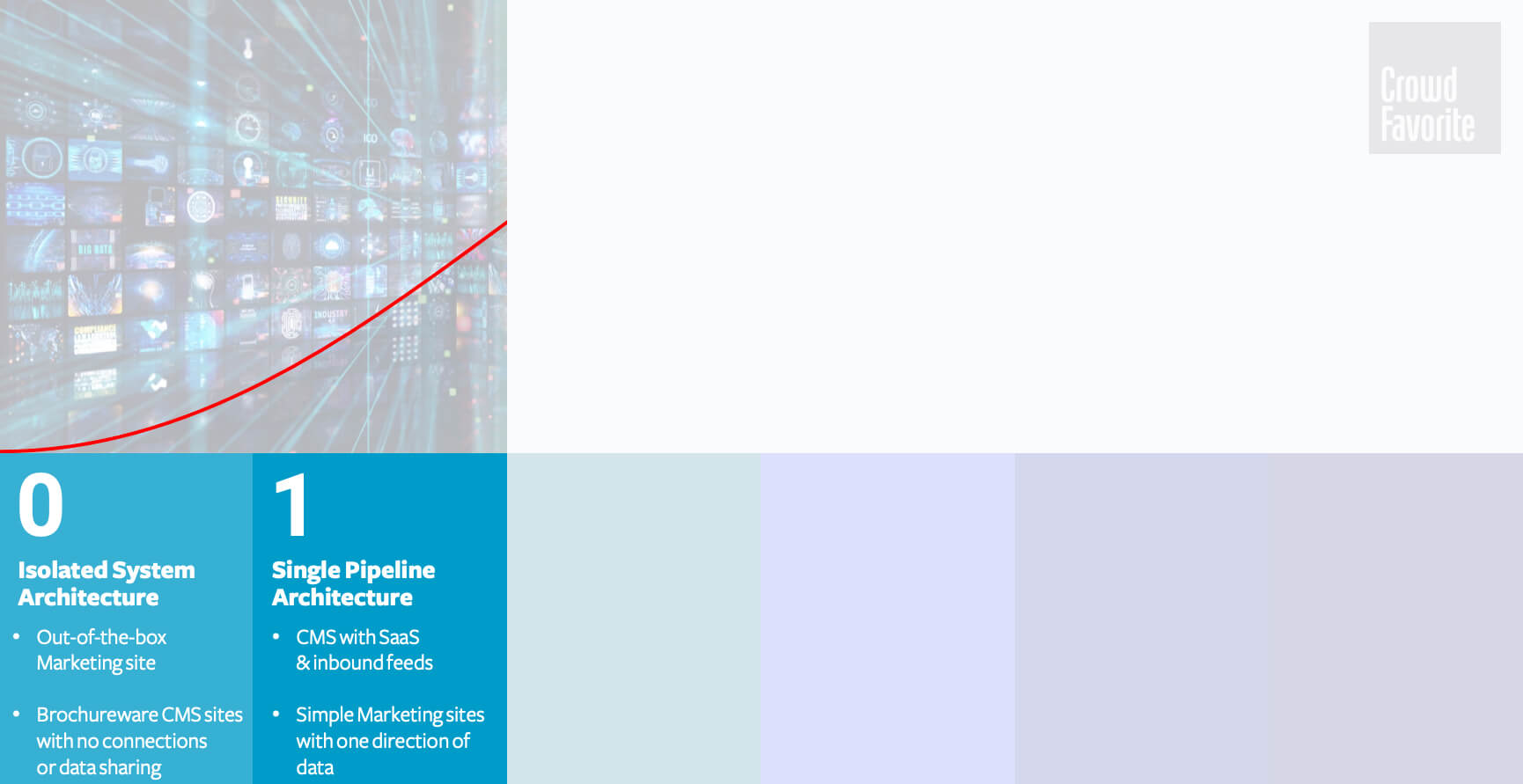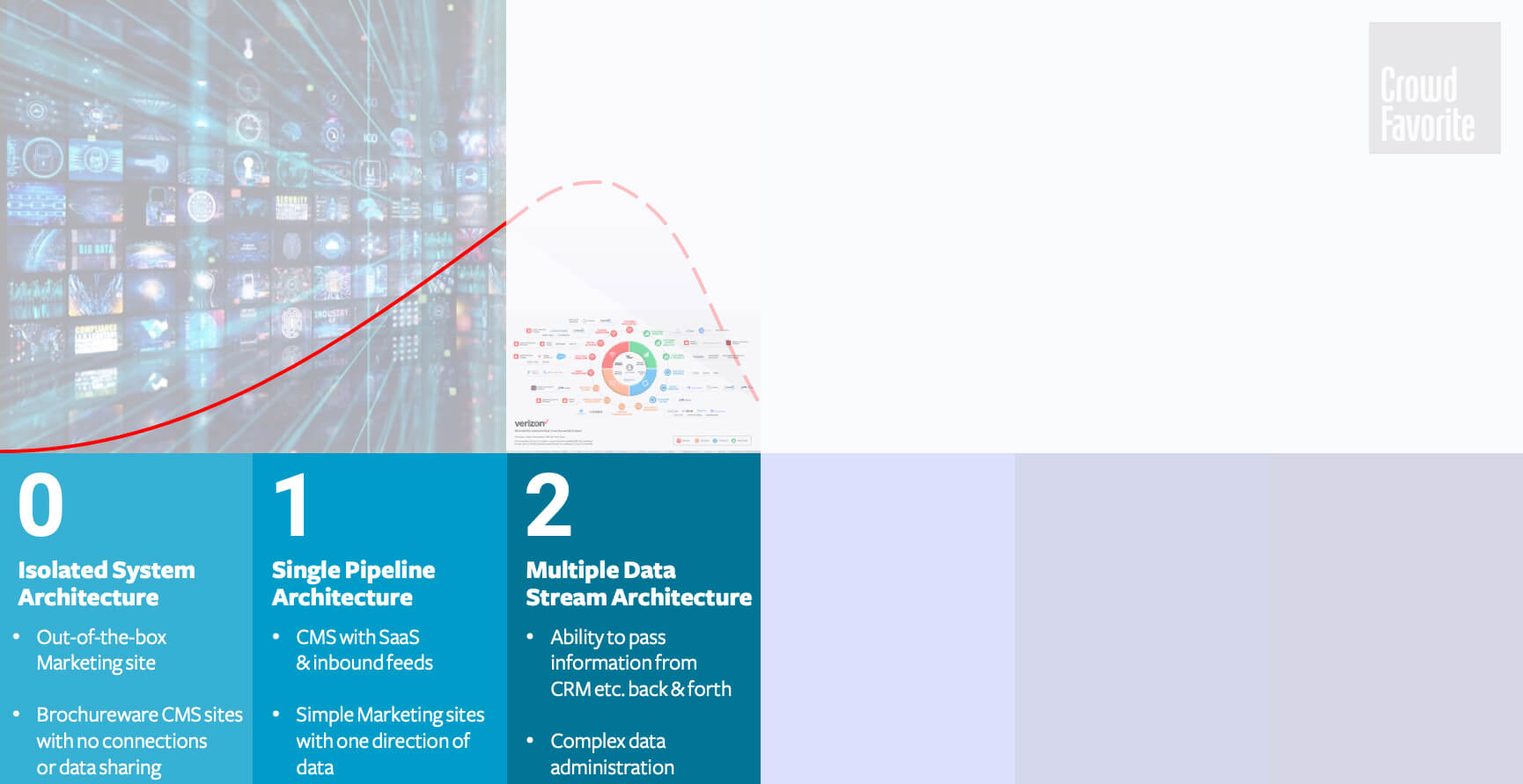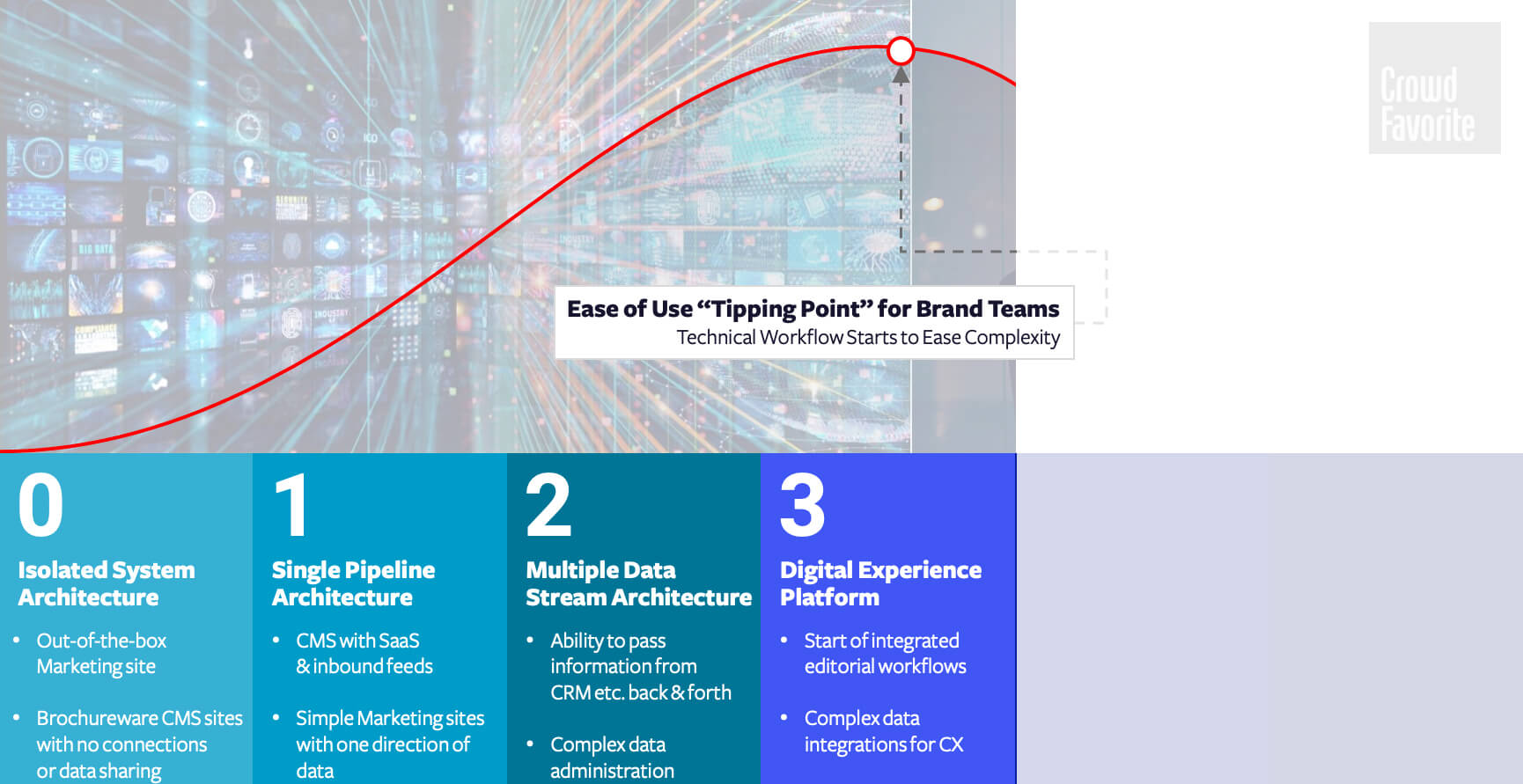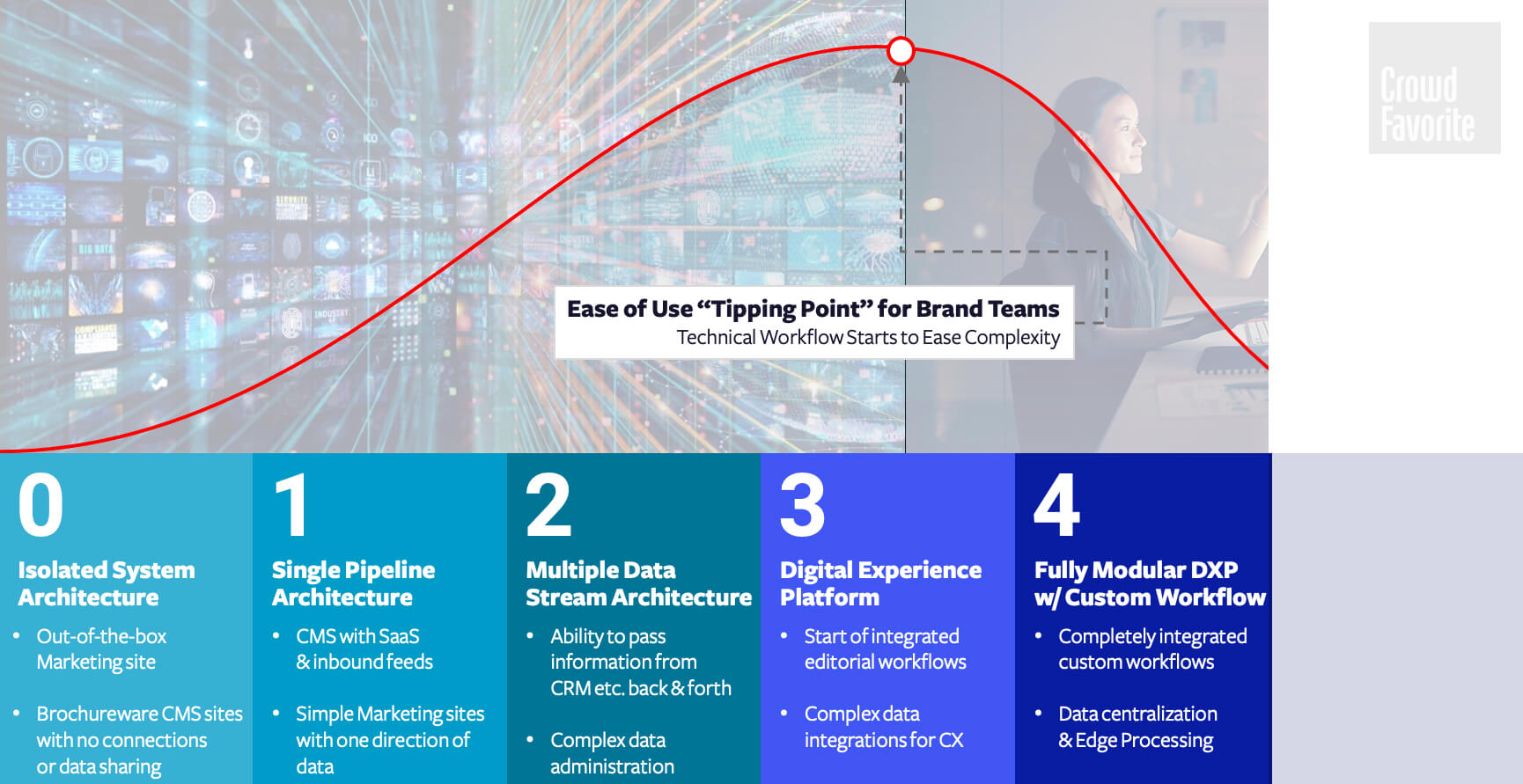Karim Marucchi, CEO of Crowd Favorite, and James Rutherford, Director, Global and Technology Partnerships at Pantheon Platform, spoke to marketers at Digital Summit, Phoenix about how marketing teams can streamline their editorial workflow effort.
Digital Summit Phoenix
Download the full presentation!
From CMS to DXP: Navigating the Evolution and Complexities of Digital Experience Platforms
In this article you will learn:
- Embracing Open Source Platforms, like WordPress, offers greater flexibility and eliminates vendor lock-in, allowing organizations to define their path based on market needs.
- Adopt a “Hub and Spoke” model using WordPress for greater control and customization.
- Open Source software provides an adaptable, cost-effective solution that caters to an organization’s specific needs.
- Simplifying your MarTech stack with Open Source enhances efficiency and reduces the level of effort for marketing teams.
Over the past half-decade, many organizations have enthusiastically embraced the shift toward Digital Experience Platforms (DXPs). This trend, backed by industry analyses such as the Gartner Quadrant, is driven by the belief that DXPs can enhance customer interactions and streamline internal processes. However, businesses often get bogged down in an exhaustive feature checklist, inadvertently neglecting the tangible outcomes these tools are intended to deliver.
In the early days of digital expansion, organizations found a straightforward solution in Content Management Systems (CMSs) such as WordPress. They offered a user-friendly, instantly operational platform for publishing content. Yet, as companies began to integrate Customer Relationship Management (CRM), email, and other tools into their digital ecosystem, the complexities started to pile up. The expected simplification and efficiency failed to materialize, causing frustration and delay while increasing the effort level for the marketing team.

The digital product landscape is complex, and most professionals have experienced the pain of a project that requires a paradigm shift, moving away from habitual practices and towards novel capabilities that address specific use cases. It’s a juggling act between satisfying customer needs, engaging internal teams, and creating impactful content, all within the constraints of available resources and time.
Unfortunately, when budget and scope constraints collide, user experience often takes a hit. This happens regardless of whether the system is proprietary or self-developed. It’s an all too common scenario: organizations investing heavily in digital tooling, yet finding themselves unable to rapidly respond to changes or empower their teams effectively. This only increases the workflow even more.
Gartner DXP Magic Quadrant
Gartner defines a digital experience platform (DXP) as an integrated set of technologies designed to enable the composition, management, delivery and optimization of contextualized digital experiences across multi experience customer journeys.
DXPs Promised A Simplified Marketing Workflow

While DXPs promised a cure-all solution, many organizations are discovering that they still struggle to make quick adjustments. Some businesses reveal that even minor website updates can take several weeks to implement. The result? Companies become entrenched in their technological investments, regardless of their inability to execute simple tasks quickly.
These organizations want the capability to transition from one system to another, like from HubSpot to Salesforce, without overhauling their entire marketing stack. This is where the challenge lies: balancing cost-efficiency with the ability to adapt to the changing digital landscape. Organizations with a significant investment in a proprietary DXP may find themselves stuck, having depleted their resources and budgets on technology that just doesn’t fit.
Monolithic DXPs and Mixed SaaS Solutions
Made Marketing Workflows Even More Complex

Software as a Service (SaaS) products, each claiming to be the ultimate solution, have only added to the confusion. Marketing teams find themselves juggling dozens of administrative interfaces and workflows. Now with over 10,000 SaaS solutions, Marketing teams are left sorting through them all.
Organizations are also being pressed to deliver increasingly sophisticated solutions such as real-time, AI-integrated personalization. These demands create enormous pressure on teams that are already struggling to keep up. The bar for DXPs keeps getting higher, making the landscape challenging to navigate. Once again increasing the workflow.
Solving Complex DXP Workflows with a
“Hub and Spoke” Concept

However, there’s hope on the horizon. Companies that embrace Open Source platforms, like WordPress, often find a greater degree of flexibility. These tools eliminate the issue of being locked into a vendor’s roadmap, offering the freedom to define their specific path based on market needs.
Big brands have adopted a strategic approach to bypass these challenges by emphasizing innovation, cost-effectiveness, and flexibility that only Open Source Solutions can offer. They are no longer fighting proprietary systems, vendor lock-ins, and hefty licensing fees, seeking instead the ability to pivot and adapt their marketing platforms quickly. The end goal? Lowering the total cost of ownership of their marketing systems and decreasing the level of effort for their marketing teams.
Open Source MarTech
Success Stories
See how Crowd Favorite helped our clients Emmys, Nvidia, and Academic Partnerships successfully leverage Open Source to deliver a true Omnichannel experience.
Open Source DXPs Reduce Workflows for Marketers

Using WordPress as a “hub and spoke” model allows for greater control and customization while simplifying the MarTech stack and making workflows more efficient. Once these workflows are mapped out, they serve as a blueprint for building a customized, efficient, and effective digital experience. And most importantly, these workflows lower the marketing level of effort and allow businesses to invest their marketing dollars in other ways.
Simplified Workflows Enable More Innovation

The key to navigating the digital experience landscape lies in aligning an organization’s unique needs and workflows with the right tools. Open Source software provides an adaptable, cost-effective solution, offering organizations the freedom to innovate and adapt at their own pace. Ultimately, the goal is to simplify the MarTech stack, enhancing efficiency and effectiveness. This allows marketers more time for innovation in new technologies such as Fully Integrated AI, Data Ownership, and Interactive, Customized Workflows.
Ready to find out more?
Interested in learning how Open Source-based DXPs can help simplify and streamline workflow complexity? Contact the team at Crowd Favorite, we’d love to sit down and discuss solutions!







